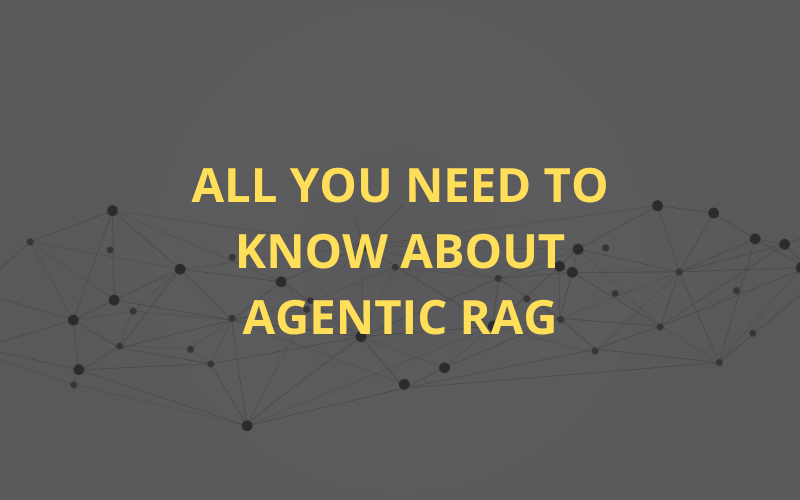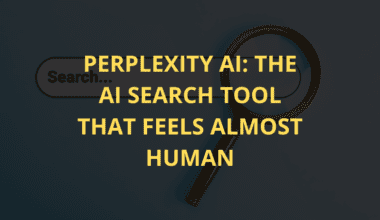Summary: Agentic RAG enhances AI by integrating autonomous agents for real-time data retrieval and intelligent decision-making. It refines responses dynamically, making AI smarter and more adaptable. Despite challenges like scalability and accuracy, its potential to revolutionise industries like healthcare and finance makes it a game-changing advancement in artificial intelligence.
Introduction
AI is evolving rapidly, and Retrieval-Augmented Generation (RAG) plays a big role in making AI smarter. RAG improves AI responses by pulling in real-time information from external sources.
Now, a more advanced version—Agentic RAG—is gaining attention. Unlike traditional RAG, it uses intelligent agents to make decisions, learn from interactions, and provide more accurate answers.
The global Agentic RAG market was valued at $79.1 million in 2024 and is expected to grow to $826 million by 2031, with a 35.1% growth rate. In this blog, we’ll explore what Agentic RAG is, how it works, its benefits, challenges, and future potential.
Key Takeaways
- It enhances AI by integrating autonomous agents for dynamic data retrieval and smarter decision-making.
- It surpasses traditional RAG by proactively analysing context and refining real-time responses.
- Industries like healthcare and finance benefit from its accurate, real-time insights and adaptability.
- Challenges include computational demands and ensuring fairness, accuracy, and seamless AI system integration.
- Mastering Agentic RAG concepts through Pickl.AI’s data science courses can give you an edge in the AI industry.
Understanding Agentic RAG
Artificial Intelligence (AI) is evolving, and one of the latest advancements is Agentic RAG. But before we explore what it is, let’s break down its two key components: AI agents and RAG (Retrieval-Augmented Generation).
What Are AI Agents?
An AI agent is a smart system that can observe its surroundings, make decisions, and act independently. Unlike traditional AI, which waits for instructions, agentic AI takes things further. It plans, reasons, and determines the best way to complete a task without constant human input.
What Is RAG?
RAG (Retrieval-Augmented Generation) helps AI stay updated. Instead of relying only on stored knowledge, it searches for the latest information from external sources like databases and APIs. This makes it worthwhile in healthcare and business, where real-time data is essential.
How Agentic RAG Works
It is an advanced AI system that goes beyond simply retrieving information. It actively searches, processes, and improves its responses over time. Unlike traditional AI models that wait for instructions, It takes action to find the most relevant information. Let’s break down how it works.
Step-by-Step Process of Agentic RAG
- Understanding the Task: When given a query, Agentic RAG first determines what information is needed. If any details are missing, it identifies gaps before proceeding.
- Retrieving Information Dynamically: Instead of relying on pre-stored knowledge, it searches for the most up-to-date data using online sources, APIs, or databases.
- Generating Contextual Responses: It doesn’t just repeat what it finds. The system processes retrieved data and integrates it with existing knowledge to create meaningful answers.
- Learning from Feedback: Agentic RAG refines its approach based on user feedback after generating a response. This helps it improve over time.
Key Components and Technologies Enabling Agentic RAG
Agentic RAG is powered by four main pillars: autonomy, dynamic retrieval, augmented generation, and feedback loop.
- Autonomous Decision-Making: The system identifies missing information and fills in the gaps without human intervention. This makes it proactive instead of reactive.
- Dynamic Information Retrieval: It fetches real-time data from sources like online databases, APIs, and knowledge graphs, ensuring accurate and up-to-date responses.
- Augmented Generation: It processes and combines retrieved data with existing knowledge to craft well-structured answers. This ensures responses are not just factual but also meaningful.
- Continuous Learning: It improves with each interaction by learning from feedback. Just like humans gain experience over time, AI becomes smarter and more efficient.
How Agents Enhance Retrieval and Generation
Agents in Agentic RAG act as intelligent assistants that handle different tasks:
- They decide what data is needed: Instead of waiting for commands, agents identify missing details and take action.
- They search and retrieve relevant information: They collect the most accurate and updated data using real-time sources.
- They combine information logically: Instead of presenting raw data, they analyse and integrate it into meaningful responses.
- They learn and adapt: With continuous feedback, agents refine their retrieval and generation processes for better accuracy.
This agent-based approach makes Agentic RAG more powerful, helping it provide better answers, reduce errors, and stay updated with real-world information.
Advantages of Implementing Agentic RAG in AI Systems
It makes AI systems smarter, faster, and more adaptable. Unlike traditional AI models that rely only on pre-stored knowledge, Agentic RAG actively retrieves, understands, and applies the information in real-time. This leads to better efficiency, improved decision-making, and scalable performance. Here’s how it benefits AI applications:
Better Efficiency and Context Awareness
Agentic RAG doesn’t just fetch data; it understands the context. This allows AI to provide accurate and relevant responses, reducing errors and improving user experience. Whether summarising documents or answering questions, it ensures that the information is useful.
Smarter Decision-Making with Adaptive AI
Instead of following a rigid approach, Agentic RAG adapts based on the situation. It refines its responses based on real-time inputs, making AI interactions more natural and effective.
Scalability and Continuous Learning
As more data is processed, It improves without needing manual updates. This makes it ideal for businesses handling large volumes of information while ensuring AI remains accurate and efficient over time.
Comparing Traditional RAG and Agentic RAG
As AI technology advances, the way systems retrieve and generate information also evolves. Traditional Retrieval-Augmented Generation (RAG) follows a fixed process—it retrieves data only when a user prompts and strictly adheres to the given instructions.
However, Agentic RAG introduces a more intelligent and autonomous approach, refining searches dynamically and adapting to user needs. Let’s explore the key differences between these two systems.
Structural and Functional Differences
Traditional RAG works reactively, fetching information based on a specific query. It does not analyse context beyond the given instructions. Imagine going to a library with a book list—you must know precisely what to ask for, and the librarian retrieves only what you request.
In contrast, Agentic RAG acts like a research assistant. It proactively analyses the user’s intent, retrieves relevant information from multiple sources, and even summarises key insights, making the process more efficient.
Performance and Use Cases
Agentic RAG improves accuracy by refining searches in real time. It excels in finance, healthcare, and law, where continuous learning and real-time insights are crucial. Unlike traditional RAG, which provides static results, Agentic RAG adapts dynamically, offering smarter, more relevant answers.
Limitations and Key Challenges in Agentic RAG Adoption
While Agentic RAG brings many benefits to AI, it also comes with some challenges. Here are a few key obstacles that must be addressed for its successful adoption.
High Computational Power and Resource Demand
It requires a lot of computing power to process and generate accurate responses in real time. Since it involves multiple steps—retrieving data, analysing it, and developing meaningful content—it demands advanced hardware and high-speed processing. This can make it costly and challenging to implement on a large scale.
Complex Integration with Existing AI Systems
Combining Agentic RAG with other AI models, databases, and applications is not always smooth. Different systems work in unique ways, and making them communicate effectively requires careful design and troubleshooting.
Scalability and Real-Time Challenges
Handling large amounts of data while maintaining speed and accuracy is another challenge. As more users interact with Agentic RAG, ensuring fast and reliable responses becomes increasingly tricky. The system must be optimised to work efficiently at scale without delays. Besides, AI models learn from existing data, which can sometimes carry biases.
Addressing these challenges will be key to making Agentic RAG more effective, ethical, and widely adopted in the future.
Future Prospects of Agentic RAG in AI Innovation
Agentic RAG is expected to improve AI systems, making them smarter and more efficient. Future advancements will allow AI to find relevant information and think more independently. This means AI can make better decisions, provide more accurate answers, and even predict user needs before being asked.
Creating More Interactive AI Assistants
In the coming years, It will help AI assistants become more human-like in their interactions. Instead of just responding to questions, these systems will understand conversations better, remember past discussions, and adapt their responses to suit each user’s needs. This will make virtual assistants, chatbots, and AI-powered tools more helpful and engaging.
Shaping the Next Generation of AI
As AI evolves, It will play a key role in making systems more autonomous. Future AI models will be able to learn independently, improve their knowledge over time, and provide deeper insights across industries like healthcare, education, and finance.
In The End
Agentic RAG represents a significant leap in AI capabilities, enabling smarter, more autonomous systems that adapt, learn, and provide real-time insights. With applications spanning finance, healthcare, and beyond, its impact on AI-driven decision-making is profound.
However, challenges like computational demands, integration issues, and data accuracy must be addressed. As AI evolves, mastering concepts like Agentic RAG can give you a competitive edge in the industry.
You can explore more such topics in-depth by joining data science courses at Pickl.AI, where expert-led training helps you build the skills needed to excel in AI and machine learning.
Frequently Asked Questions
What is Agentic RAG, and How Does it Differ From Traditional RAG?
Agentic RAG enhances traditional RAG by integrating AI agents that actively search, analyse, and learn from interactions. Unlike standard RAG, which passively retrieves data, Agentic RAG autonomously refines responses in real-time, making AI systems smarter, more adaptive, and capable of dynamic decision-making.
What are the Key Benefits of Implementing Agentic RAG in AI?
It improves efficiency, enhances contextual understanding, and enables continuous learning. It helps AI systems generate more accurate, real-time insights while reducing errors. This makes it ideal for applications in finance, healthcare, and other fields where up-to-date information and intelligent decision-making are critical.
What are the Challenges of Adopting Agentic RAG?
Despite its advantages, It faces challenges like high computational power demands, data accuracy issues, and complex system integration. Ensuring fairness and scalability are also key concerns. Overcoming these hurdles requires robust AI models, optimised processing power, and continuous refinement of data retrieval mechanisms.



